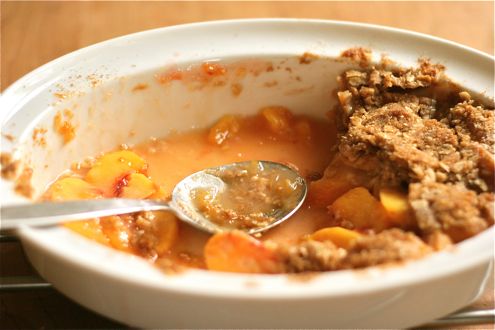“It’s about the sauce, not the little snot of meat in the shell” Mario told me later. “Nobody is interested in the little snot of meat!” Heat, by Bill Buford
I can’t believe I’ve never written about this.
A couple of years ago I read this book Heat by a guy who was a fiction editor at the New Yorker. He took time off from his life as an editor and took an unpaid position in the kitchen at Babbo, an Italian restaurant in New York. The book details what he learned and how it completely changed the trajectory of his life. Anybody who knows me well could tell you that I really loved this book. As in reading it six times in one year – the kind of love which probably would more accurately be described as obsession. There’s a particular passage where the author describes making linguine with clam sauce, “begin by roasting small pinches of garlic and chili flakes and medium pinches of the onion and pancetta in a hot pan with olive oil” and so on, and I could just about taste it while reading. I imagined the rich smoky scent of the pancetta. The briny, winey, butter swirling around silky noodles. Splayed grey clam shells and bright green parsley strewn over the top. Linguine with clam sauce might seem pedestrian – some version is served at every mediocre Italian restaurant – but Mr. Buford’s prose was so compelling, I had to try it.
For some crazy reason that had to do with having trouble finding the right page in the book when I wanted to shop for ingredients (I know this is a lame excuse but the book has no index!) and being fearful about major dinner revolt caused by serving clams to my kids who fear all shellfish except crab and shrimp, I never actually did try this recipe. Until today. Somehow after the excesses of Thanksgiving, linguine with clams seems festive and at the same time, a little bit reductive, at least in terms of technique and ingredients. It doesn’t take all day to put it together. It doesn’t require even a single glug of heavy whipping cream. And Mr. Buford’s description captured my imagination. I envisioned excellent baguette for mopping up the juices, a Verdicchio to drink and a lightly dressed fennel and cucumber salad. I thought this might be the perfect post Thanksgiving meal.
Babbo Linguine with clams, Mr. Buford points out, was “no longer linguine exactly; it had changed color and texture and become something else. I tasted it again…in this strand of linguine: an ocean pungency.” It was, deliciously, just that. And a welcome respite from leftover turkey and mashed potatoes as well.
Linguine with clams – serves 4
I had to conflate Mr. Buford’s method with some more practical aspects from Marcella Hazan’s recipe for Linguine with clams in Essentials of Classic Italian Cooking. For instance, “a big handful of clams”? What’s that? Ms. Hazan writes you’ll need 4 or 5 littleneck clams per person – sounds like a big handful to me.
- 2 tsp finely chopped garlic
- 1/4 tsp – 1/2 tsp chili flakes – this will barely be hot. If you’re not serving kids, bump it up a little.
- 3 tbsp minced red onion
- 3 tbsp finely chopped pancetta
- 3 tbsp olive oil
- 4 tbsp unsalted butter, softened
- 4 splashes white wine (1/2-3/4 cup?)
- 1 lb linguine fino
- 24 littleneck or other small clams
- 1/3 cup finely chopped flat leaf parsley
- splash of green olive oil to finish
- Set a large pot of water to boil over high heat. Salt the water until it tastes as salty as sea water.
- Put a very large heavy bottomed sauté pan (not non-stick!) on a burner and set the heat to medium. Allow the pan to heat up for 2 minutes. Add the olive oil, then garlic, chili flakes, onion and pancetta, all at once. Stir until softened. Do not scorch. About 2 or 3 minutes.
- Spoon off any olive oil and add the butter. As it melts, swirl, and then add the wine. Let it bubble for 20 or 30 seconds and turn off the heat.
- When the water has hit a rolling boil, add the linguine. Stir until all the strands are separated and submerged and the water has returned to a full boil.
- Dump all the clams into the sauté pan, turn up the heat and clamp a lid on the top. The clams will be done in about 6 or 7 minutes. By this time the pasta will be nearly done.
- When the pasta is almost done, set the clams on high heat.
- Do not drain the pasta in a colander in the sink! The starchy pasta water clinging to the linguine is a key component of the sauce. Make sure the pasta pot is right next to the sauté pan. With big tongs, reach into the boiling water and drag the drippy wet pasta into the pan of clams – taking a few passes so you get most of the pasta out of the pot. Simmer the pasta and clams for 30 seconds.
- Dress lightly with the green olive oil and strew parsley over the top.
- Serve immediately in warm pasta bowls.
I bet you’ll love Heat, if you haven’t read it yet, although probably not as obsessively as I did. (Even I can see that was a little weird!) If you want to make this using Mr. Buford’s excellent notes, the text describing how starts on page 130 in the hardcover edition, two thirds of the way into chapter 12 for those of you who have the paperback.






































